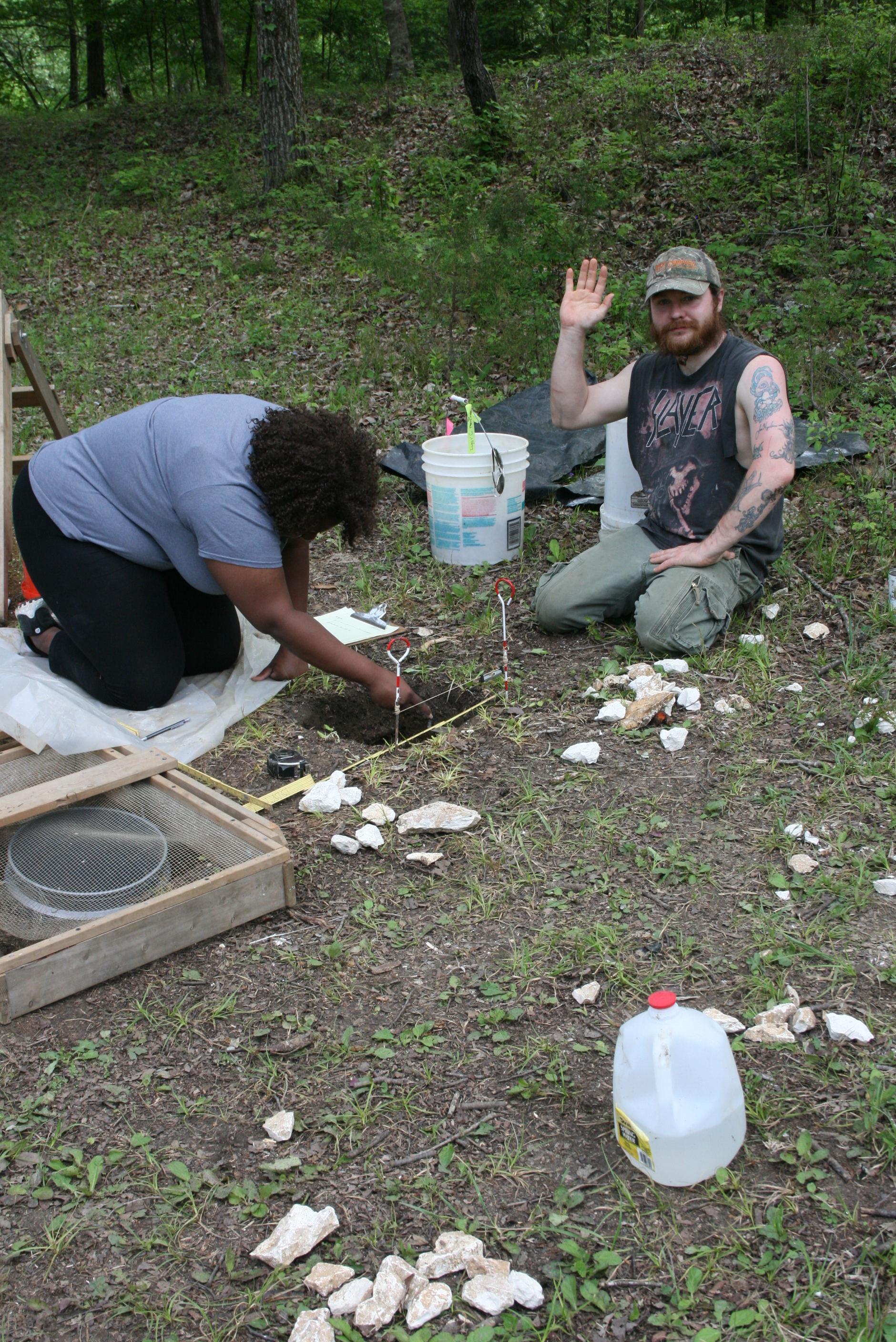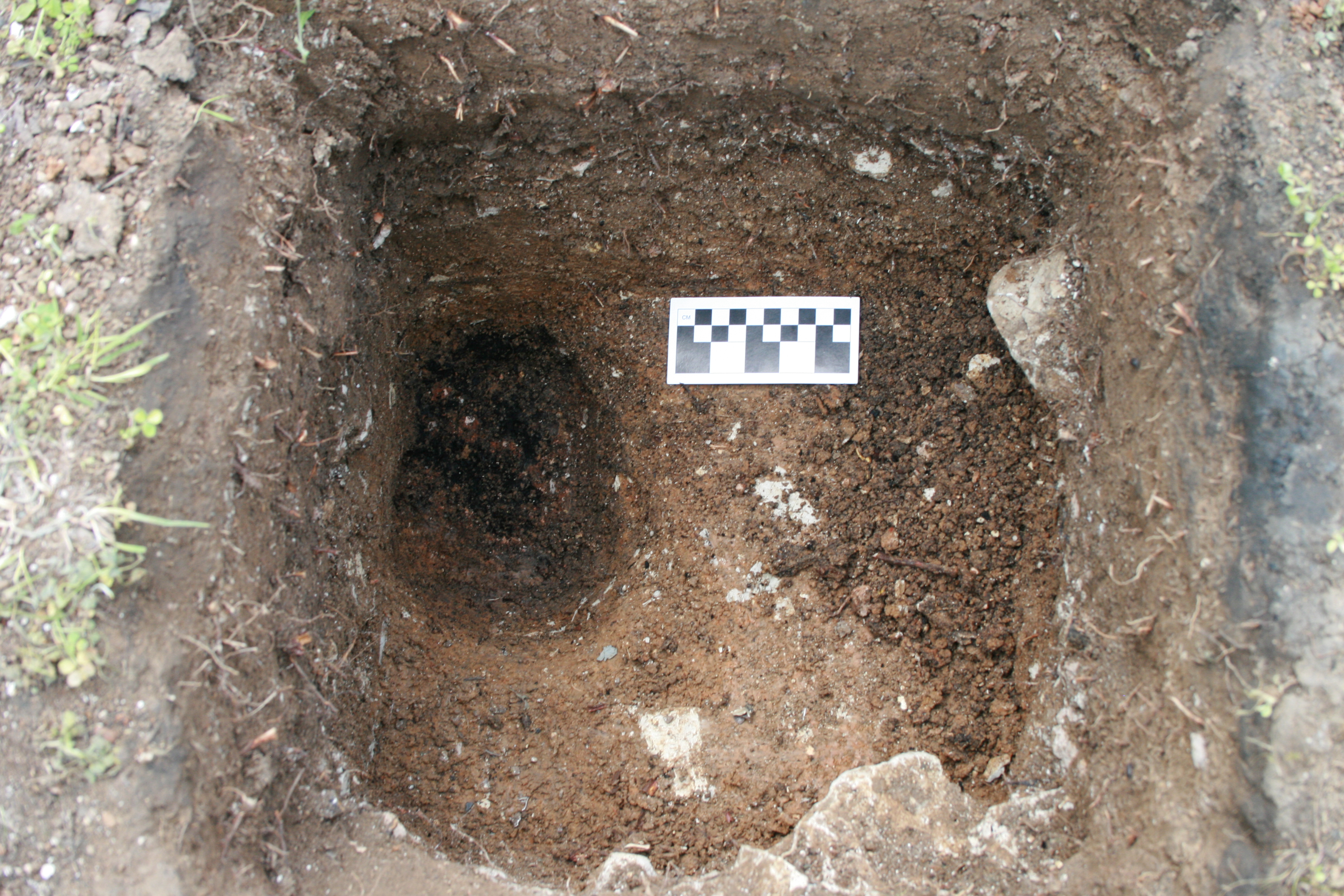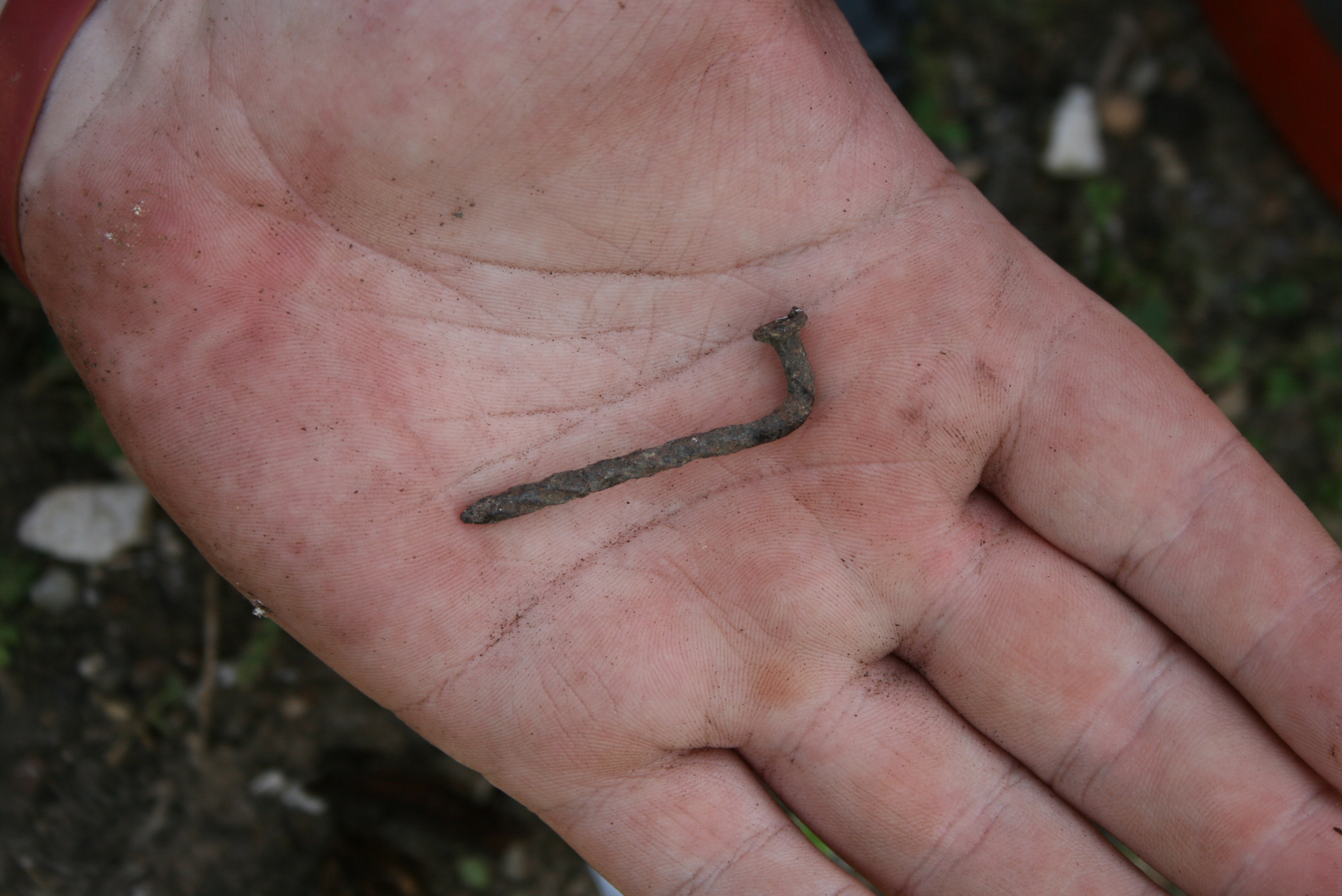April 11 and 13
by Valencia Moore
Greetings Readers,
Like all other weeks at field school this has been an awesome
one. Myself, Skyler, Cory, Natalie, and Dr. Dumas are all filled with energy
and have the same two goals in mind. The first of those two goals is to finish
excavating each panel hole to install signs throughout the fort for Community Day.
The signs that will be installed will provide visitors with a brief description
of the area where they stand. The second goal is to use our time wisely and
have all layers of dirt screened and sorted through by April 22.
I spent April 11 screening dirt excavated from panel hole
#12, which is one of the holes for the “Archaeology and Preservation” panel.
Based on the large numbers of bones, ceramics, and nails in the dirt, we think
that this hole is located in a French period midden. A midden is a layer of
debris that builds up as a result of human activity. In most cases, midden can
simply be described as garbage. All of those artifacts were found in Layer A or
Layer B. A few pieces of bone were found in Layer C. In panel hole #11, less
than three feet from where I’m working, Cory dug into the third layer (Layer C)
and got a clearer view of a large piece of chalk approximately 15 cm wide. It
seems to be more of the chalk rubble that we have found elsewhere on the site
(see previous blog posts) and that we suspect was being used to fill in
erosional gullies. Cory attempted to screen the soil from panel hole #11 but it
was too wet, so he left it laying out to dry with the hopes of screening it the
following day. Cory and I both managed to finish panel holes 11 & 12.

Due to
there being a lot of rainfall on Monday, Natalie and Skyler had to postpone
their excavations. They began working on panel holes 18 & 19, which are
being excavated for the panel about the Tombigbee River. They began setting up
their unit squares and started new paper work for those units and got fast to
work. In panel hole 19, Skyler found a roughly circular area about 10 cm that
was full of charcoal and dark soil.

He dug and dug, finding no artifacts.
Finally, deep beneath the surface, he found a screw shank nail that had been
clenched. Screw shank nails were developed in the mid-19th century
and were made of iron. The nail we found in the deep hole, clearly a post hole,
is steel, so it is a 20th century nail. We think that this post hole
and screw shank nail are associated with a barbed wire fence that once ran
across this part of the cliff. The fact that it is clenched near its head could
mean that it was used to hold wire on a fence post. In any case, it is not a
colonial post and nail.
 In nearby panel hole 18, Natalie found a thick layer of
clay like the orange clay that we have seen elsewhere and interpreted as fill.
Dr. Dumas is having her dig it out to see how deep it goes.
In nearby panel hole 18, Natalie found a thick layer of
clay like the orange clay that we have seen elsewhere and interpreted as fill.
Dr. Dumas is having her dig it out to see how deep it goes.
I hope you enjoyed this updated blog post. See you next time!